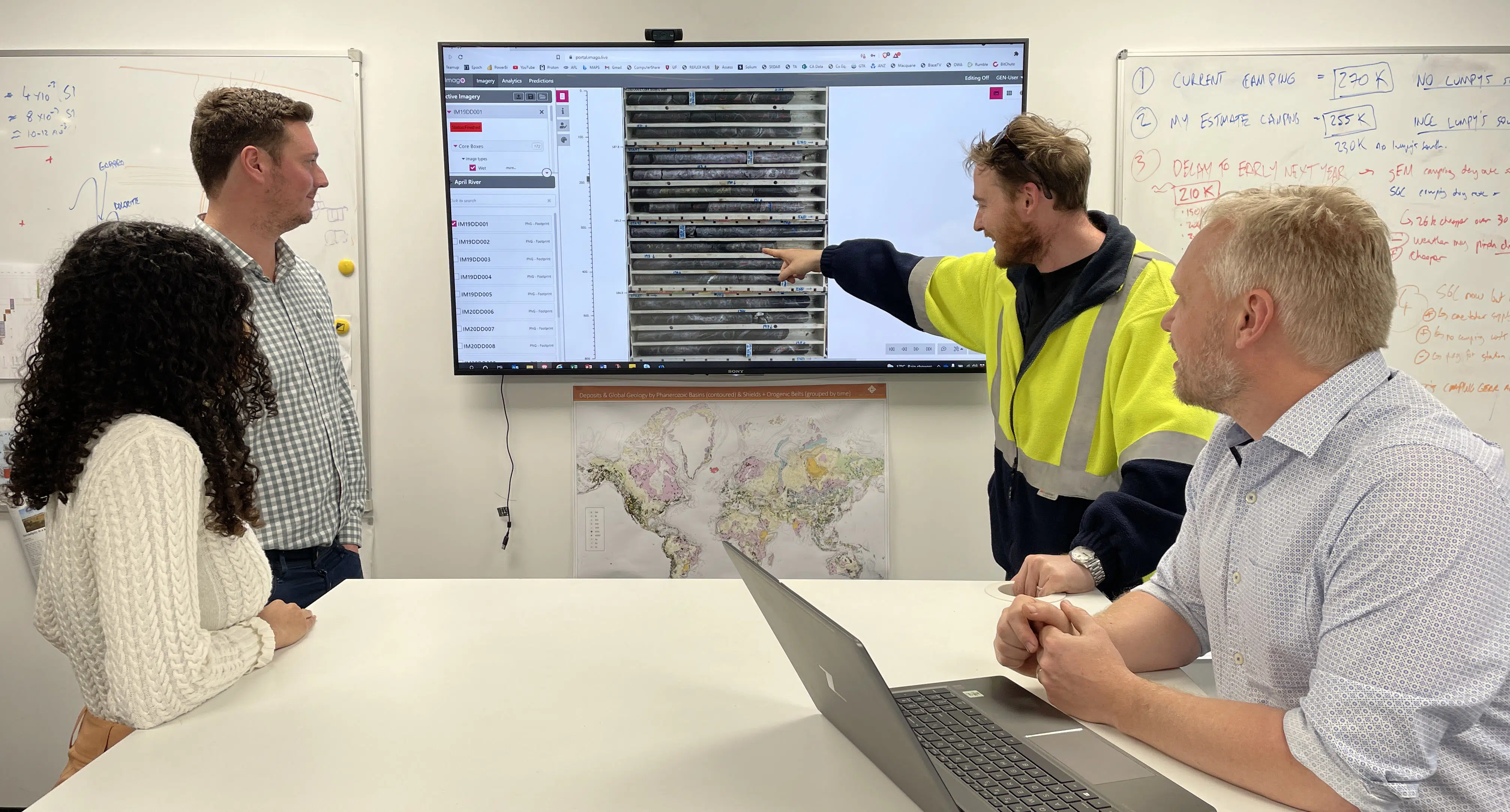The use of Imago and Seequent allowed First Quantum Minerals to effectively carry out remote exploration project reviews during the Covid-19 pandemic. Imago’s cloud-based platform with its easy capture, access, collaboration and validation of core, chips & hand sample imagery integrates seamlessly with Seequent’s ecosystem, delivering rich information for modelling, interpretation and decision making. The Exploration division of First Quantum Minerals is also working with Imago to capitalise further on their image assets through application of image analysis and machine learning methods.
The Project
For over a decade, the Exploration department of First Quantum has used Seequent’s solutions, and more recently began introducing Imago as part of its core system environment. Cloud-based Imago integrates with the Seequent ecosystem and connects seamlessly with Leapfrog Geo, allowing users to easily access data, collaborate and validate using high-quality core photo images. This direct access to imagery provides rich information to support interpretation, modelling and decision making.
Systems Design & Implementation Manager – Exploration, Neville Panizza, comments, “Imago is the way we capture core photos throughout Exploration. Being cloud based it provides us with the ability to review core photos remotely, which has been a real asset during the current pandemic. Exploration managers, senior & project geologists all have the ability to review and discuss their projects from anywhere in the world, without having to be at the actual project, directly through the cloud based Imago interface. As Imago can link core imagery directly into Leapfrog Geo, these photos are then incorporated into the interpretation and decision making process within the 3D modelling environment. This becomes powerful as core photos can be displayed downhole and reviewed at any interval. One of the main philosophies of the Systems team in First Quantum Exploration is to integrate as much information as possible and make it available at the decision point, as when data is presented at the decision point it becomes knowledge. The Imago and Leapfrog Integration has definitely helped us to achieve this, allowing us to collaborate much more effectively.”
The Exploration Systems team, combined with the Exploration geoscience team, is also investigating the use of machine learning (ML). Neville explains, “We are working on standardising our core photo capture system across all exploration divisions, with the aim of automatically applying machine learning techniques and collating multiple layers of data from different internal systems. In the long run we’d like to bring everything into Seequent Central as our visualisation and interpolation platform; collecting images via Imago, pushing them out to ML, and then bringing the results back into Central.”
Situation
High quality core photos have always been regarded as a requirement in any exploration project, however in a lot of cases, photos are taken, stored on the server and potentially never accessed again. One of the main reasons for this is that they are statically stored under a file based folder structure, with no intelligence.
Prior to Imago, the First Quantum Exploration Core photo system was a manual process, with a touch of automation gained through an in-house built MS Access core photo renaming tool, which allowed First Quantum to rename photos by assigning prefixes, core type, etc. Explains Neville, “Even though this would allow us to rename a 800m hole in under 5 mins, the storage mechanism was still a server, a file based storage system that was hungry for space, growing with each drilling project and requiring countless hours to backup, not to mention a lot harder to integrate with platforms such as Leapfrog Geo and Central.”
In contrast, Imago is a Cloud Storage Imagery System which integrates directly with supported cameras via a capture application which catalogues and displays all imagery in real time, in an easy to access visual cloud based format. Once uploaded to the Imago Portal users can find and locate high-quality images in seconds and easily work with them. Imago was founded to help companies manage the high volume and size of core imagery and unlock their value.
Response
It is essential that First Quantum’s Exploration team can readily capture core imagery with ease, in a systematic standard format, and then share and integrate this imagery in real time with all members of the geological team and other software\decision making platforms. When the Covid-19 pandemic struck and travel was restricted, this became even more important, and the Imago system was a vital tool in remote project reviews and decision making due to the above reasons. In 2020 and 2021 First Quantum was able to benefit from Imago in a number of ways, ensuring minimal interruption to their project review process during the disruption caused by the pandemic.
Capture and cataloging
Using Imago, core photos are immediately captured and catalogued in sequence and then instantly accessable by users and collaborators via a web browser through the Imago Portal. The Imago Capture software significantly improves the camera set up process and helps ensure consistency of high-quality imagery.
Systems Supervisor – Exploration, Sam Davies says, “It can be hard to get everyone to work in the same way across all sites. Imago has taken us a long way towards standardising that workflow already. I’d say we are 90% there, and we are constantly working with Imago regarding closing the last 10%.”
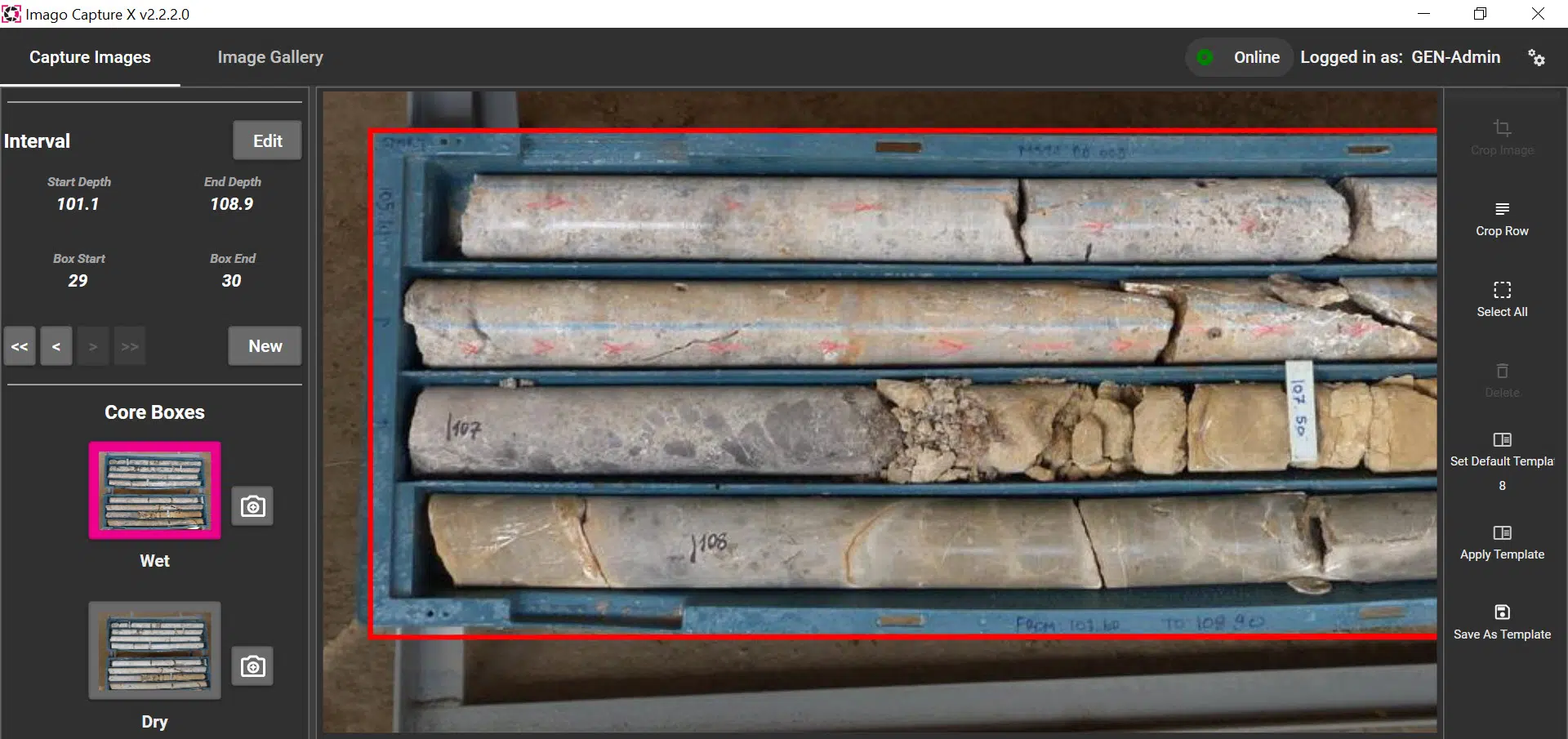
Figure 1. Image capture process using Imago Capture X software. Preloaded profiles and syncing capabilities are used to exclude any setup requirements for users while cropping options and interval incrementing also reduces human error. With an internet connection validated core photos are quickly available for review and photo analysis by any remote user.
Image viewing
Image viewing is of high performance, with smooth and fast navigation. Users can visualise full-resolution imagery as the Imago platform is optimised to deal with thousands of gigabytes of imagery using an open tech platform, directly though a web browser supplying a permission controlled link. Images can be viewed as both strip logs and core boxes.
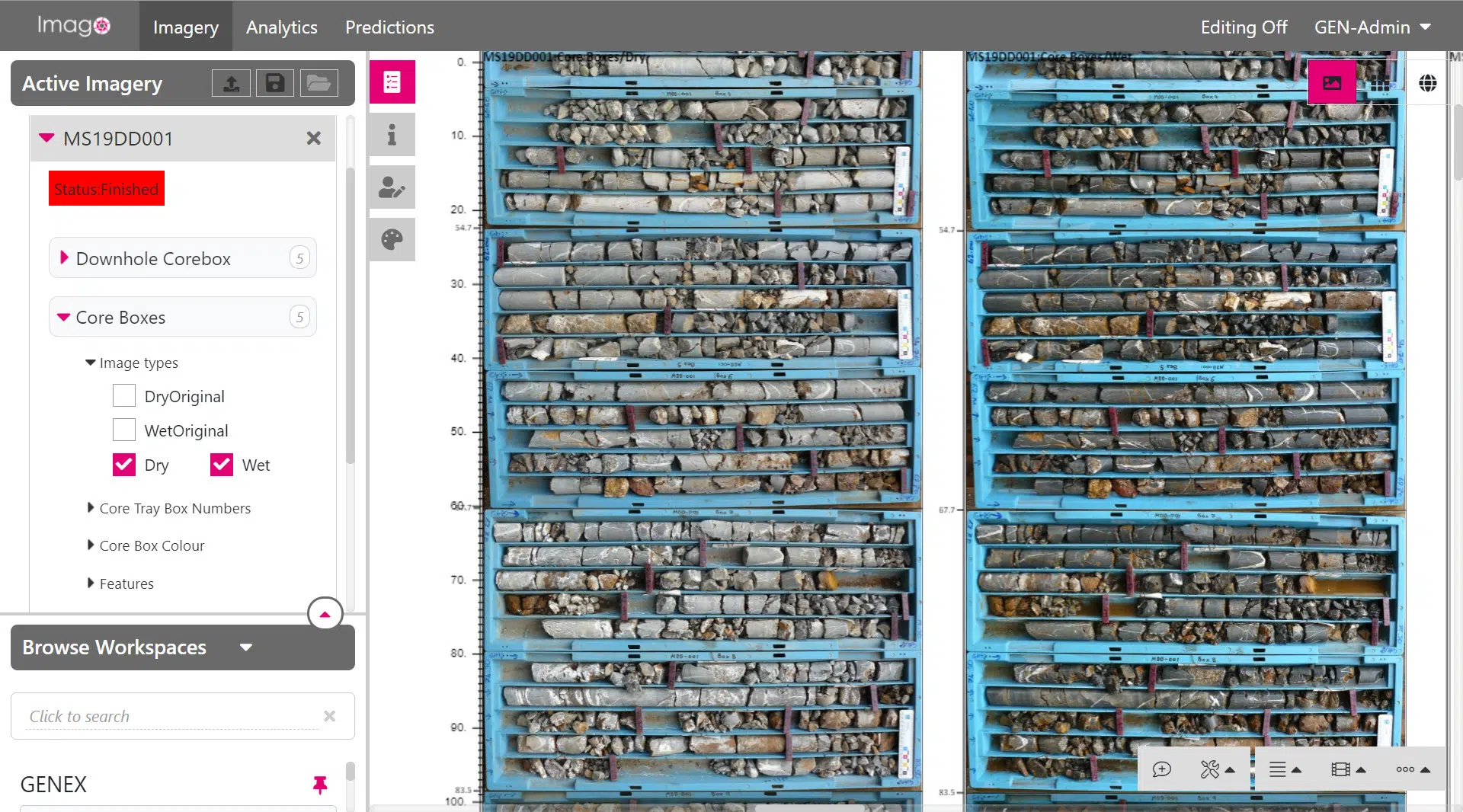
Figure 2. Accessing core images via the Imago web interface. Comparing wet and dry core images for a drillhole minutes after the photos were taken at a remote exploration site.
3D Modelling Integration
Imago integrates data seamlessly with Leapfrog Geo, providing instant access to core imagery to support interpretation and modelling in a 3D environment. Core Imagery can be added to all downhole intervals easily through the ‘Imago Link’ tool, which creates a hyperlink to the Imago Portal. Users working in Leapfrog can then access full-resolution core imagery via the Imago Portal through a simple click and have the relative core box in front of their eyes for the interval in question. Users can also further analyse neighboring core boxes of value when inside the Imago Portal. This allows users to continuously validate logs and assays contained in their models using the original high resolution core imagery.
3D meshes can also be generated and the core imagery from Imago can be assigned to these meshes (both core trays or strip imagery) and opened inside Leapfrog to view core trays alongside drillholes. Comments Neville, “This is really powerful because you can see your core photo beside your drill hole inside your model and as a result you have all of the information at the time you’re making the decision, meaning users can collaborate effectively, ultimately improving confidence and reducing risk.”
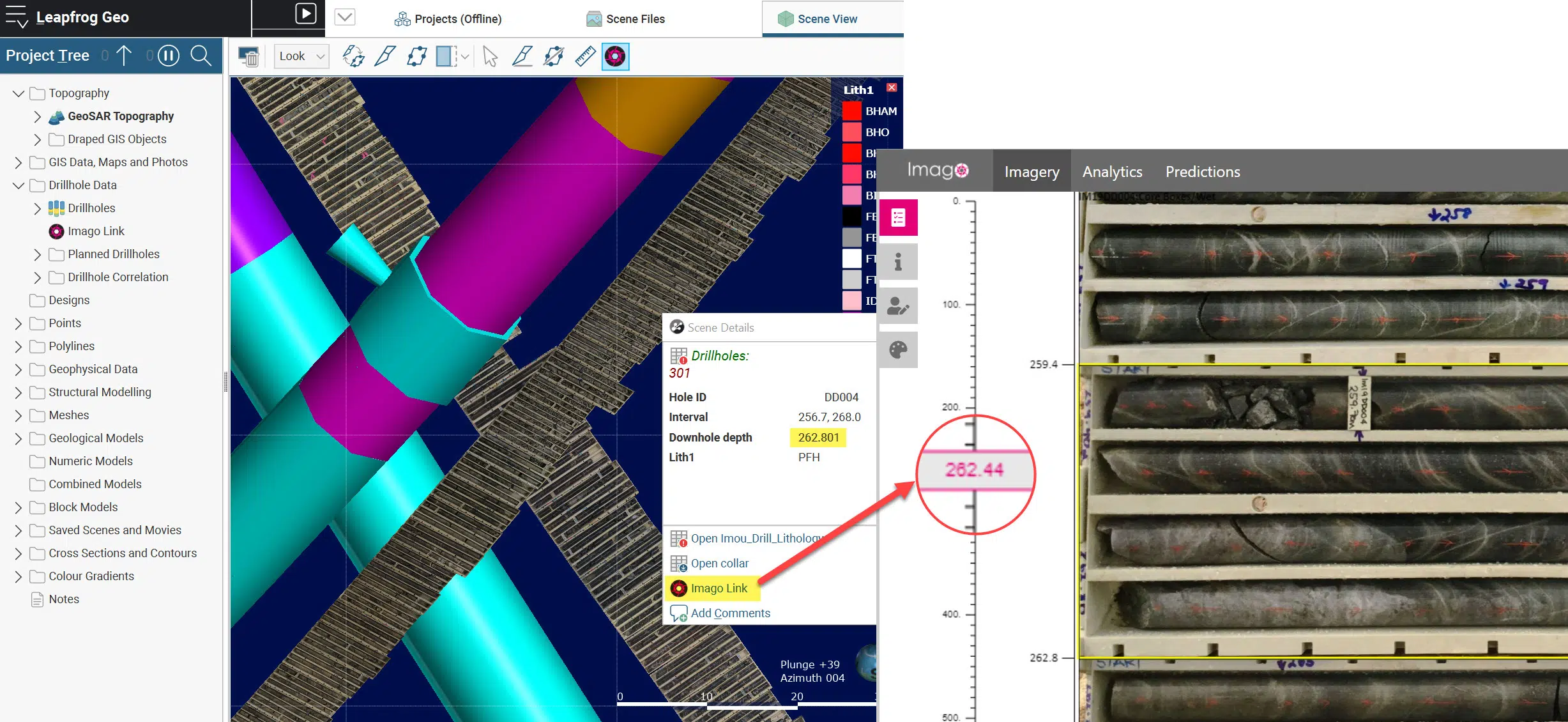
Figure 3. Core box photos assigned to meshes and displayed downhole alongside intervals in Leapfrog Geo. Insert: Direct interval link to high resolution core photos stored in the Imago Portal.
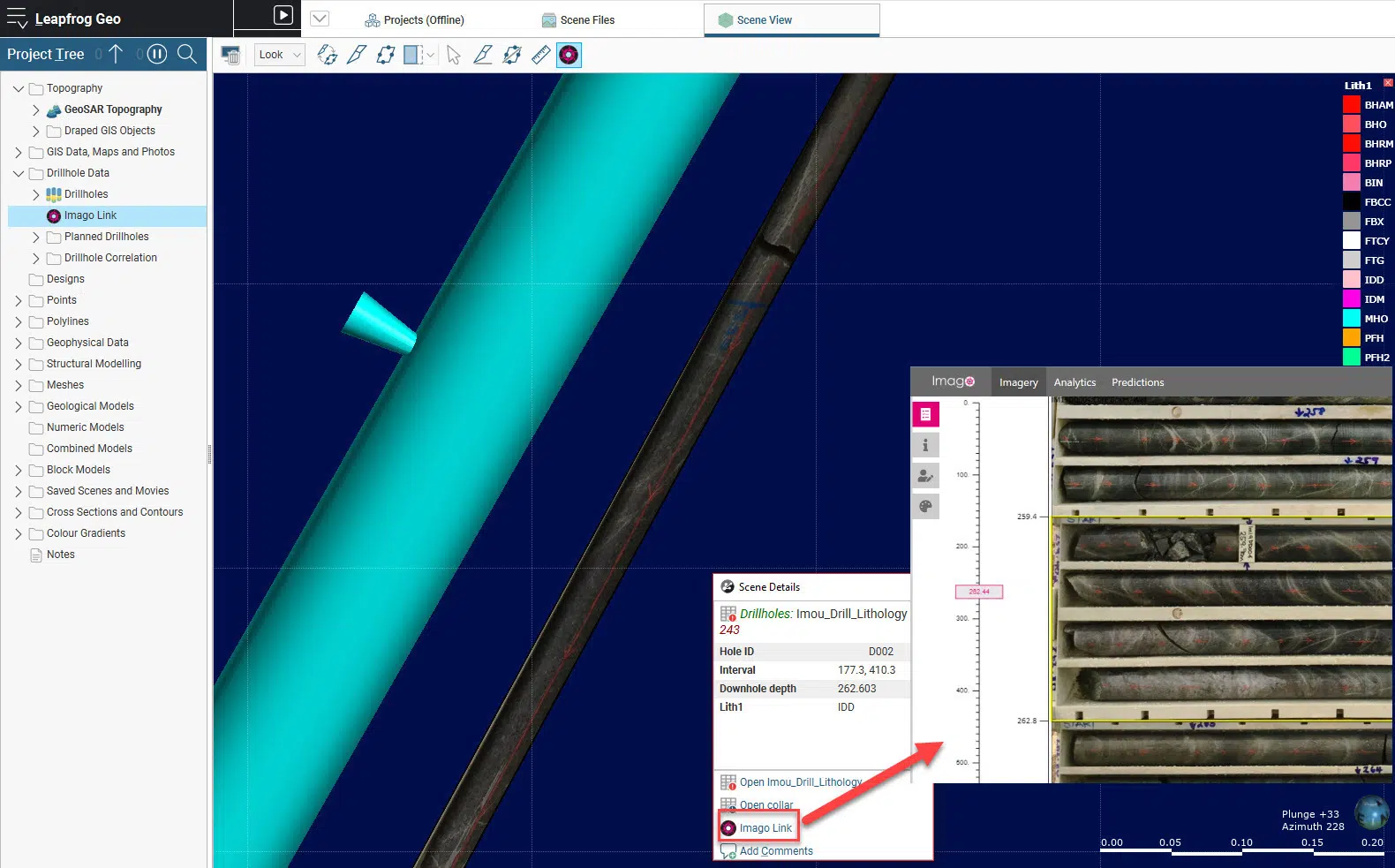
Figure 4. Drillcore is linear in nature and when in core boxes becomes quite fragmented. Here core is restored as a linear feature and displayed along the hole trace to help improve understanding and decision making.
Fully agnostic, (Hardware, data client and ML platform) Imago connects seamlessly with Leapfrog, MXDeposit, Oasis Montaj, Micromine, Datamine, Surpac, Vulcan, acQuire and many more.
Digital Strip Logs
The First Quantum Exploration System team has also linked Imago to their SQL database and moved the strip log environment into a digital real-time space. SQL views were developed within the FQM database and connected to the Imago Portal, enabling any downhole data from the database to be plotted downhole against the core photos directly within the Imago Portal. Sam Davies explains, “Access your browser, use the digital collection systems (LogChief, ioLogger etc), synchronise logging to the database, hit refresh and downhole data is displayed against the core photos in Imago.”
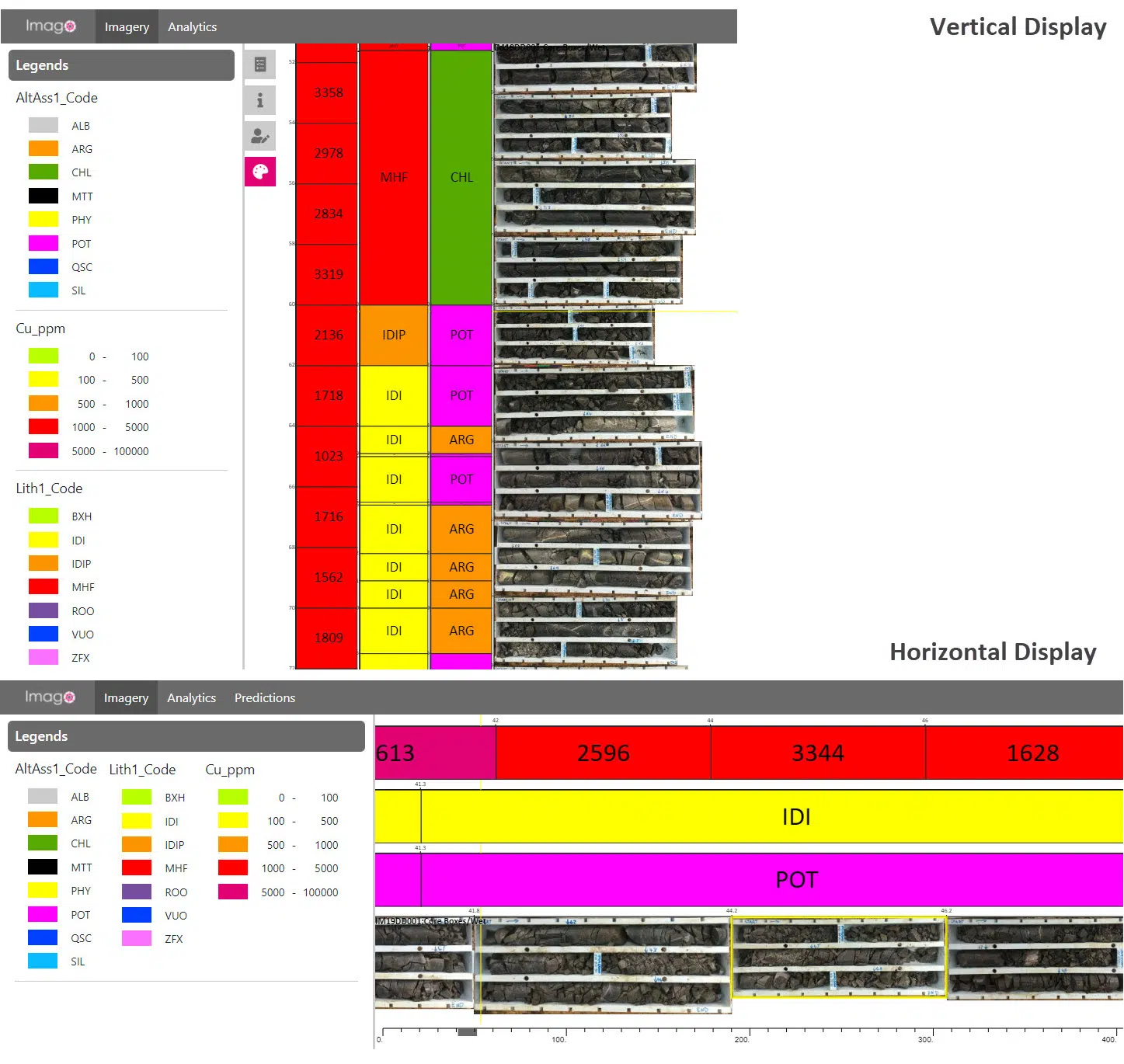
Figure 5. Example of a ‘Digital Strip Log’ in the Imago Portal. The downhole data includes Lithology, Alteration, Assays etc directly linked to First Quantum’s internal SQL Database.
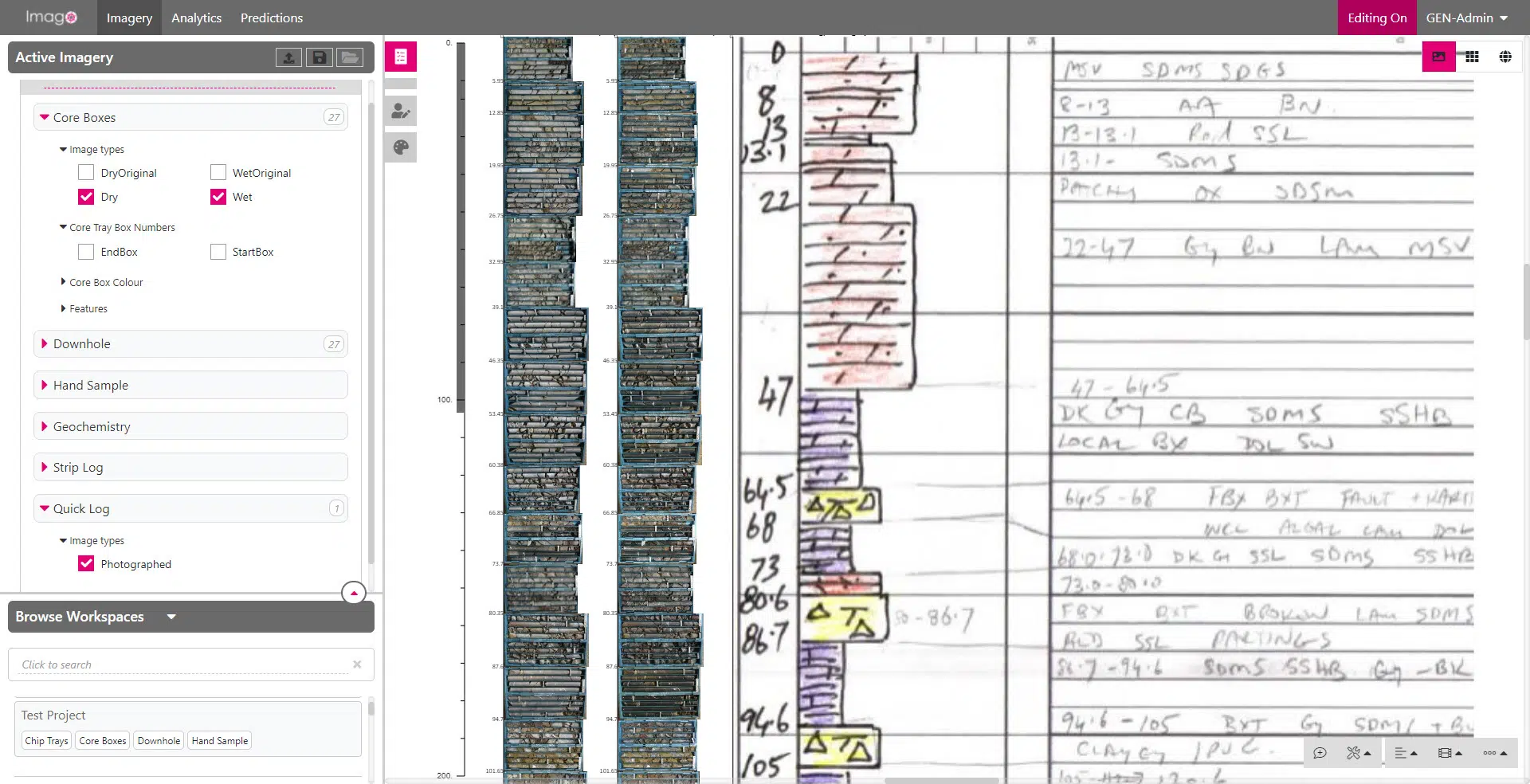
Figure 6. Imago also has the capability to import static images and reference them downhole alongside existing core photos and digital data i.e. hand drawn images, strip log created in other software etc. This is very powerful when reviewing historic projects.
Comments Neville Panizza, “We are able to review and visualise downhole data directly against any important zones found in the core photos. The concept in the future is to develop machine learning techniques that match these zones of interest and automatically find them in other core photos; i.e. this is what a massive sulphide looks like, now go find me more! This could result in the system prompting logging, with the potential to reduce logging (and re-logging) programmes because you are starting to predict.”
Machine Learning
Imago is helping to operationalise machine learning at First Quantum Exploration, and their open tech and architecture means that the data remains within First Quantum’s control.
Sam Davies comments, “Imago has several useful machine learning features built in, including a colour extractor and RQD calculator. We are discussing with Imago about using their image pre-processing workflows to separate the core tray photos down into smaller segments. Once we have this in place, the sky’s the limit really in terms of what we might do with these images. For instance, we can pull out different features within the core, log the broad lithologies by integrating with other data within our database, like geochemistry. We collect a lot of SWIR (short-wave infrared), as well as downhole petrophysical data, these might also help with predicting things like alteration and textures. With the help of the Imago system, machine learning workflows such as these can be built into our existing infrastructure and automated.”
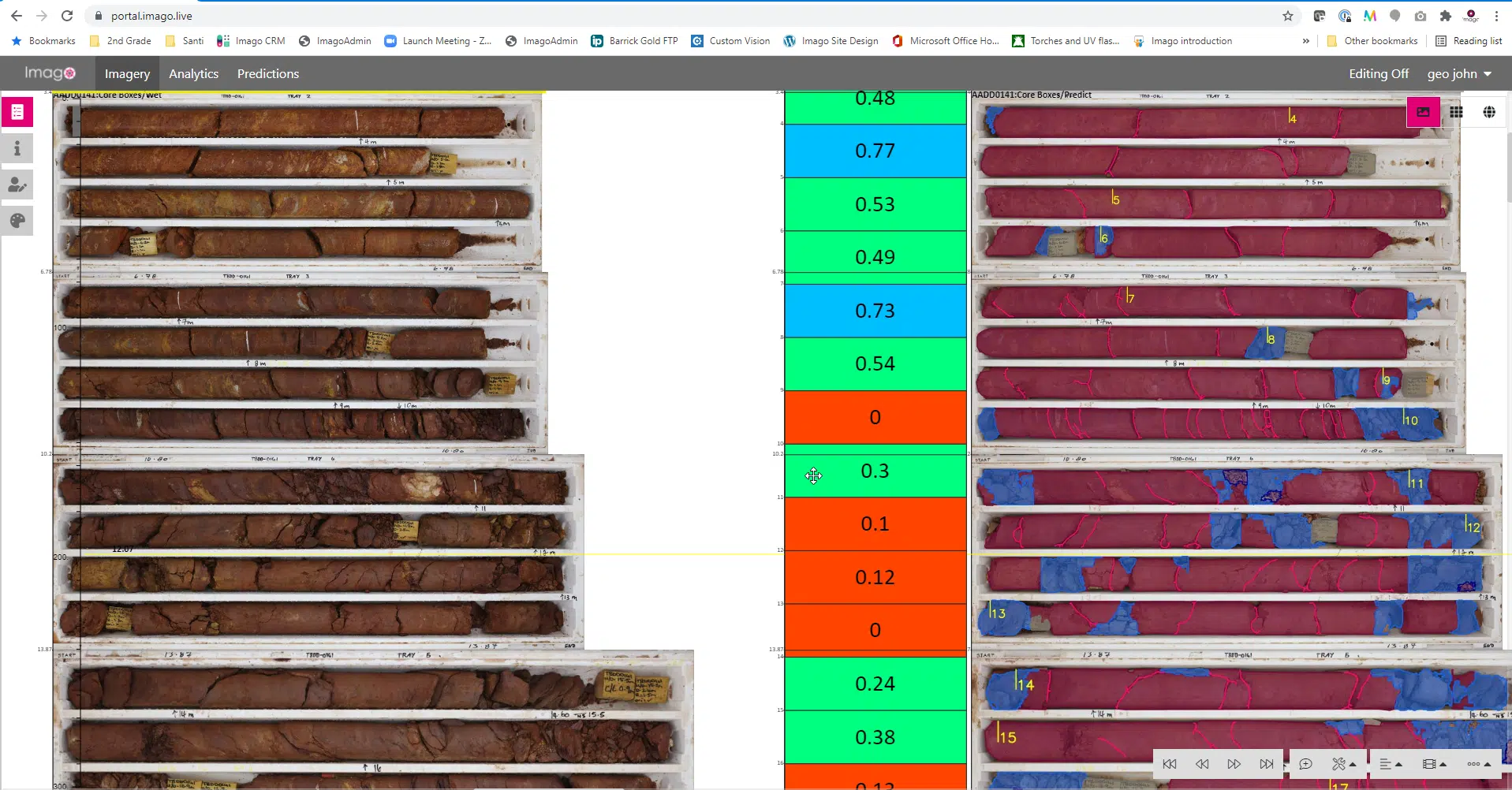
Figure 7. Imago has built in machine learning workflows, such as the RQD calculator shown here. This process involves cropping an image, identifying core rows and depth blocks, segmenting core into solid, fragmented and crushed regions, and identifying cracks within solid regions. Using this information, and the known start and end depth, Imago estimates depths within the core tray by determining how much of the overall depth interval is accounted for by solid pieces, then interpolates depths through the fragmented and crushed regions of the tray. Then, using all of this information, Imago provides summary information back to the user, such as RQD and fracture counts.
Outcome
Having Imago in place meant that work was not adversely affected or interrupted during the pandemic. And First Quantum now have a cloud-based image management system in place that integrates with Exploration’s main software solutions, Leapfrog and Central, and will enable them to extract more value form their geoscientific imagery.
Comments Neville Panizza, “During the pandemic we couldn’t travel but we had Imago, which meant we could continue to look at core photos, plot data downhole and conduct project review meetings around them. People went from thinking they didn’t need it to really appreciating how valuable it was as we were able to continue to effectively review projects and have meaningful conversations. As lockdowns are quite unpredictable and the limitations they impose often severe, having this sort of flexibility has been incredibly important.”
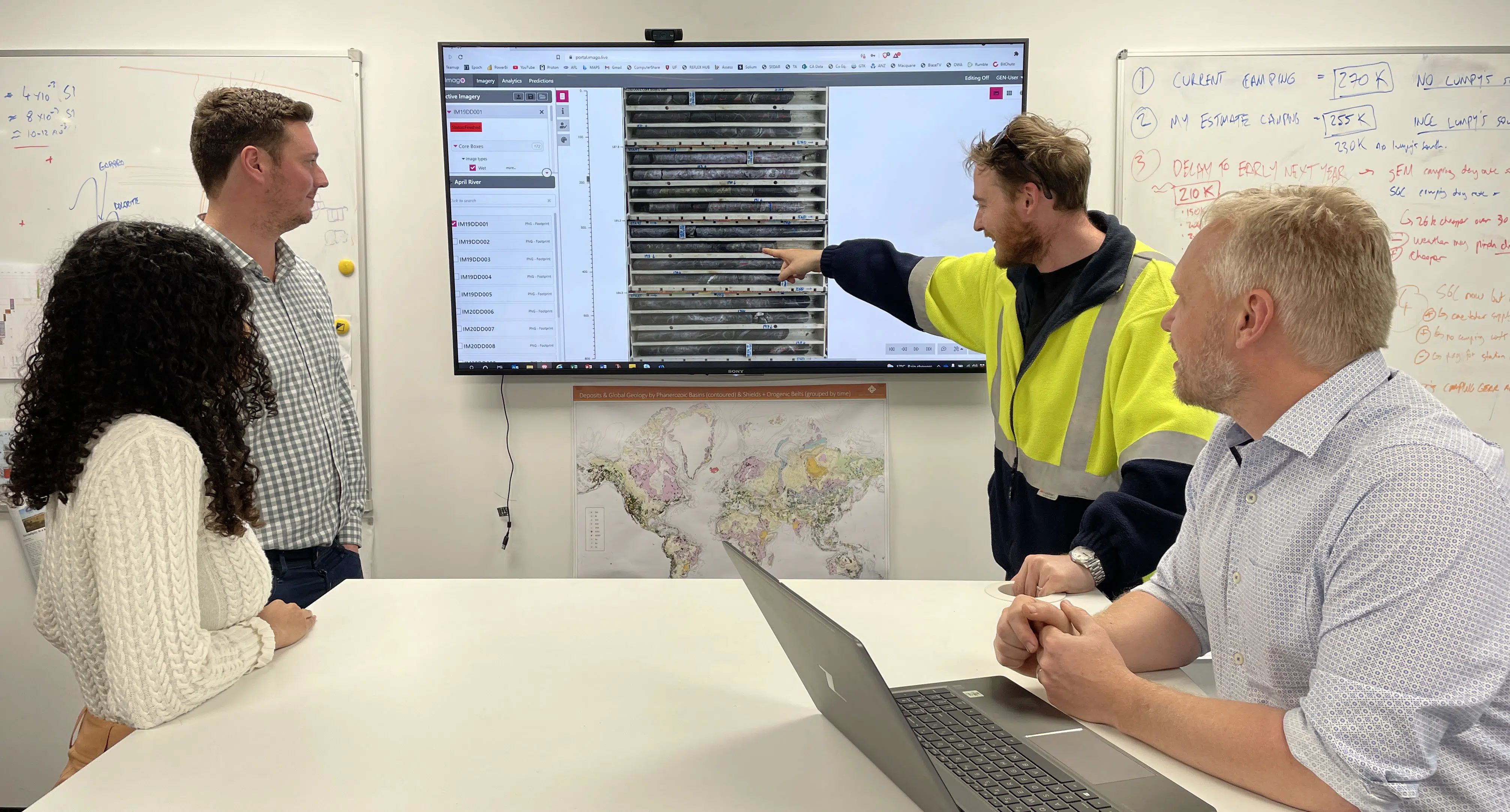
Figure 8. Members of the First Quantum Generative Exploration team evaluate drill results from the PNG project in the Perth Office.
Going forward First Quantum Exploration intends to use Imago on all future projects, continuing to display digital strip logs in the Imago portal and update all Leapfrog models with core photos.
Concludes Neville, “We are very much trying to integrate a system and the capture at the same time and we see that as very important. We are using the tools that are available to us via Seequent, IMDEX and Imago and determining how to use all of the information from those three main systems in Machine Learning and then bring it back into our decision points. So Imago and IMDEX are our collection points from where we will build a machine learning environment and Central and Leapfrog Geo are our visualisation decision making tools.”
Quote from Seequent, “It’s great to hear how Imago and Seequent have helped First Quantum stay effective during the pandemic and also begin to develop machine learning capabilities further. Imago provides a powerful way to manage and extract value from high-quality geoscientific images. It’s the next best thing to looking down on the core in the shed and your images are available anytime via the cloud and for use in virtually any way you want them. View, share and collaborate, use in your modelling or in machine learning to automate repetitive tasks, provide predictions and free the geologist to focus on the geology.”
Benefits experienced by First Quantum Minerals (FQM)
- Reduction of Server space & Backup requirements
- Reducing human error & time in the field by minimising manual metadata entries
- Removing the need for photo renaming and manual transfer of photos to server
- Real time photo sharing and project review capability through web environment
- Sharing can also occur with 3rd party JV partners by controlling user account & project permissions.
- Advanced core visualisation by integrations with Leapfrog and DataShed
- The Imago Portal is a geologist collaborative space where users can view, annotate, share and discuss core photos
- Single repository of High Quality core photos across all FQM projects
- Platform for implementing and automating data analytics (e.g. machine learning) workflows
